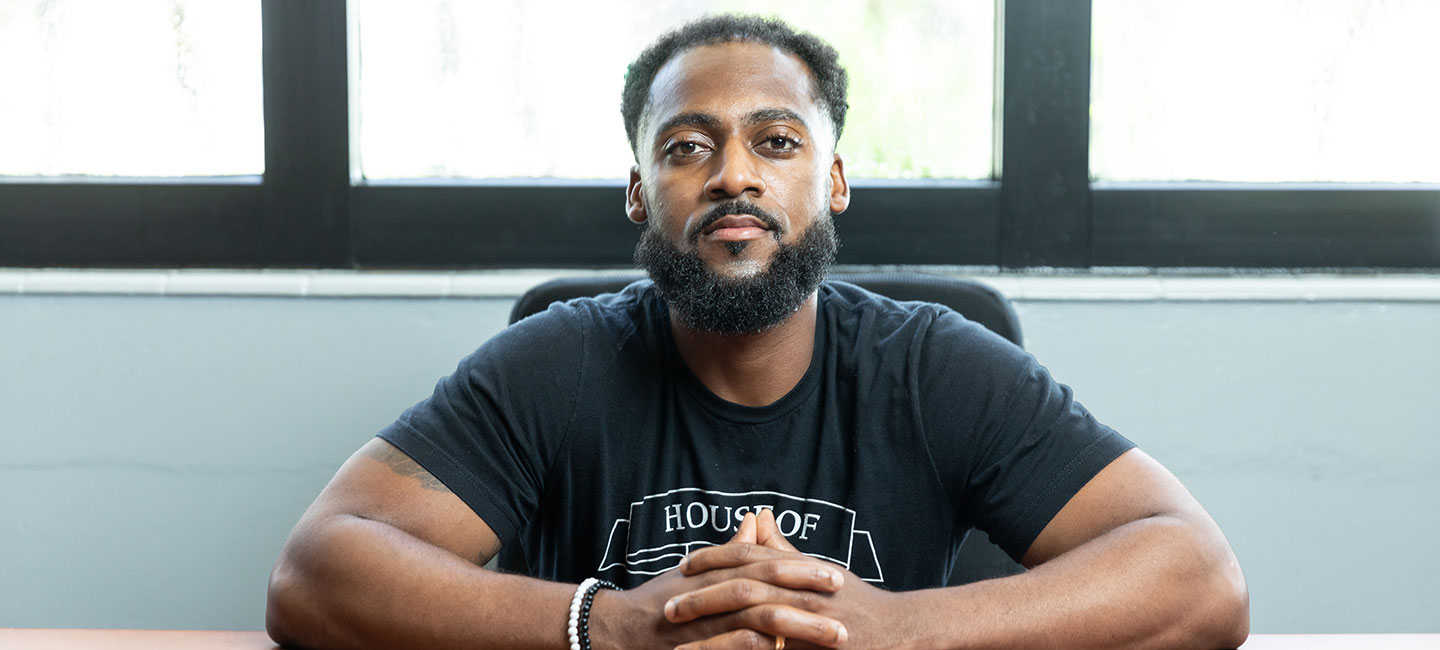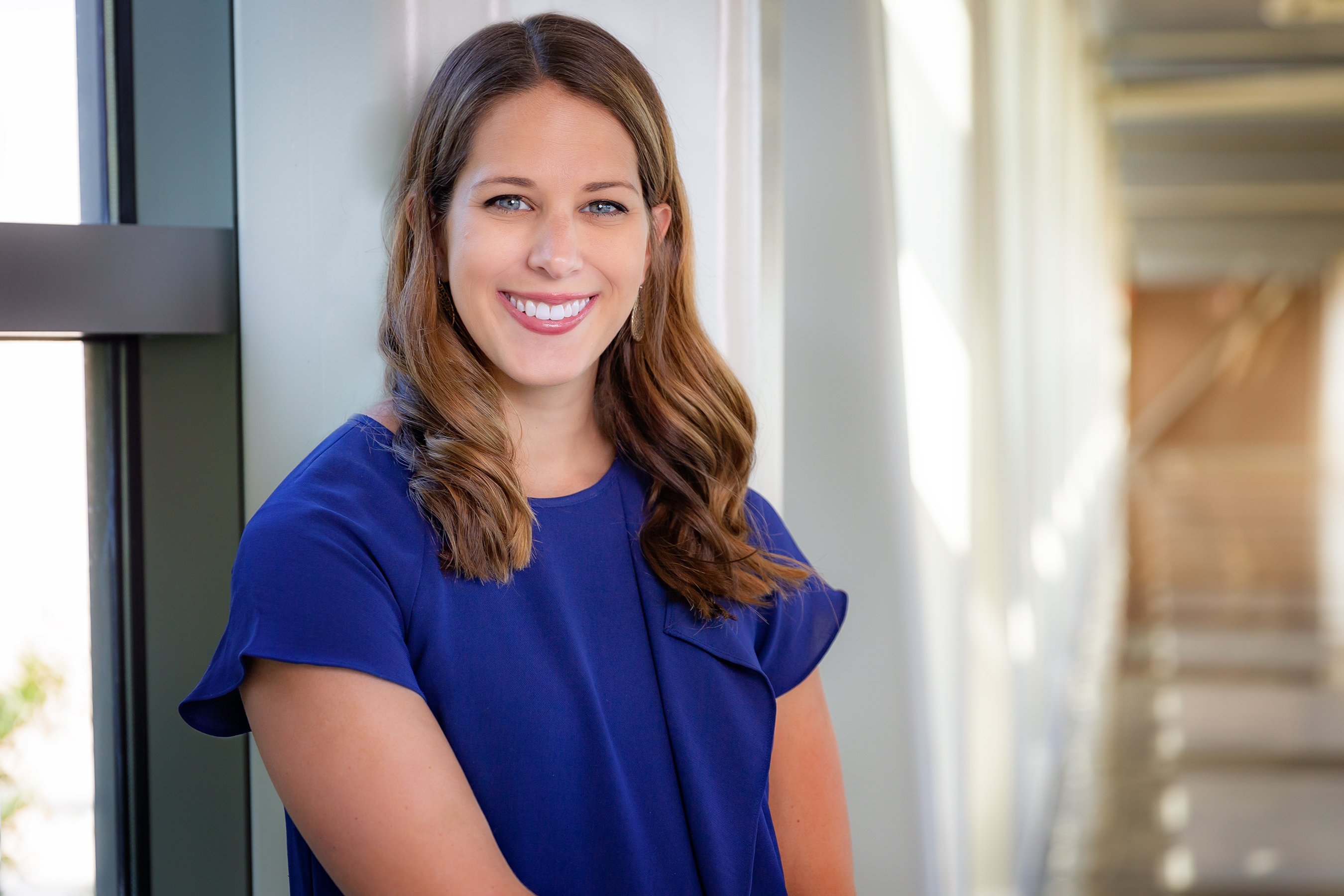Stepping Up to the Plate
Jarryd Reid was six years old when his dad came home with a baseball glove. His older sister was in the Girl Scouts, and it was time for Reid to find a hobby.
He joined the sport much later than most of his teammates who had already played T-ball, and it showed.
“I was one of the worst players in the whole park for a long time,” said Reid. He batted at the bottom of the order, and one time a centerfield coach caught a fly ball right above him, thinking Reid couldn’t catch it.
But what skills Reid lacked, he made up with attitude. “I always got commended by a lot of my coaches for giving the most effort and just always hustling.”
Reid attributes his drive to his parents’ journey to have children. His mother suffered back-to-back full-term miscarriages, followed by a stillborn birth before giving birth to Reid and his sister.
“The [other babies] didn’t have the opportunity I did so I am going to do the best I can since they never got a chance,” said Reid.
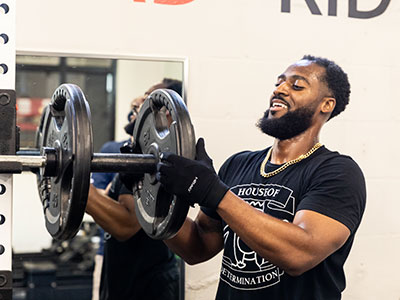
After playing baseball in college, Jarryd Reid continued to focus on his physical fitness.
With that effort, Reid became captain of his high school baseball team, was recruited to play at Florida A&M University and began dreaming of a professional career. He was an elite athlete – the very picture of good health – and focused on working out and eating right.
But in the spring of 2020, he ran into his toughest challenge yet: a rare type of non-Hodgkin lymphoma. Looking back on the diagnosis, Reid told one of his teammates that all the work and training had been worth it.
“Being this fit saved my life,” he said.
Rare diagnosis
Reid had big goals for 2020. He was coaching a flag football team and hitting the weight room hard to get back up to his college weight. He had turned down pro baseball opportunities to follow in his dad’s footsteps to become an educator, and was halfway through another school year as the student success coach at Sligh Middle Magnet School, mentoring students with attendance, behavioral or curriculum problems.
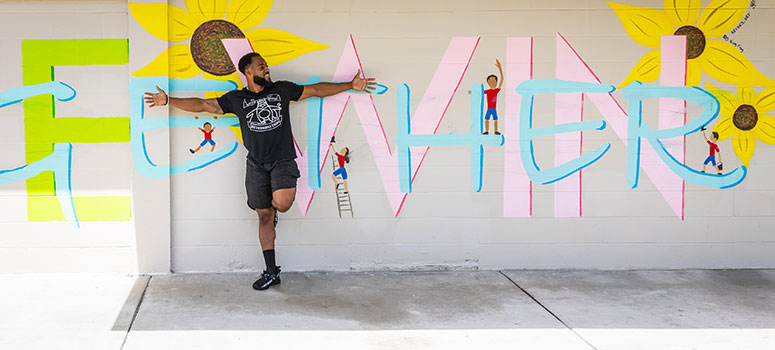
Jarryd Reid works as the Student Success Coach at Sligh Middle Magnet School.
“Jarryd is a people person and a magnet for the kids,” said Sligh Middle Magnet School Principal Anthony Jones. “Oftentimes, our students —for a lot of different reasons— don’t get that level of intensity at home, so to have somebody here to keep them accountable, stay with them, believe in them and care about them, it’s impossible to overstate the significance of his role.”
Things were going well at home, too. Reid had married his high school sweetheart, Aramis, and they were raising their 18-month-old daughter, Jaxin.
In February, Jarryd began having back pain. He assumed he injured it working out, but weeks later he was still in pain and his appetite decreased. He started having night sweats and feared he might have COVID-19.
In April, his wife and mother urged him to go to the emergency room for blood work and a CT scan. The results showed stage 4 mantle cell lymphoma, a rare type of non-Hodgkin lymphoma that affects the lymphatic system.
The median age for mantle cell lymphoma is 60 to 70 and primarily affects white men. Jarryd is a 31-year-old Black man. A doctor would later tell him he was the youngest mantle cell lymphoma patient he had ever treated in his 25-year career.
“It kind of made me think I might have been misdiagnosed. I felt like an anomaly,” said Jarryd. “My immediate concern is man, now I have to tell my wife and my parents.”
Because of COVID-19 protocols, Jarryd was alone in the emergency room and had to deliver the news to Aramis over the phone.
“My heart stopped,” said she said. “I was just in disbelief. I thought the worst. To me, cancer means death.”
Not so for Jarryd. With his strong baseball mentality and deep faith, he believed God had specifically chosen him for this fight and refused to back down. “I don’t believe in worrying,” he said. “I was ready for whatever. I knew I was going to have to suffer, so I was just stepping up to the plate. Whatever I have to go through, let’s do it, so we can beat this.”
Leading the team
Three days after his diagnosis, Jarryd began his first round of inpatient chemotherapy at a community hospital. Because of the pandemic, he was hospitalized alone for three weeks, and when he returned home his family witnessed the immediate effects of the treatment.
“To me, he didn’t even look like himself,” Aramis said. “His face was so sunken in from all the weight he had lost. I just thought he was so fragile, like he was going to break.”
The chemotherapy had severely weakened Jarryd’s immune system, which made him extremely vulnerable to COVID-19. To protect himself, he quarantined on the second floor of his home in between treatment cycles. Daughter Jaxin would come to the foot of the stairs and call up to him.
“That was the worst part, hearing my daughter at the bottom of the stairs,” Jarryd said. “I really take pride in being a father and a husband and to have to hear my child downstairs ask about me for weeks and I can’t embrace my kid. Man, that really killed me.”
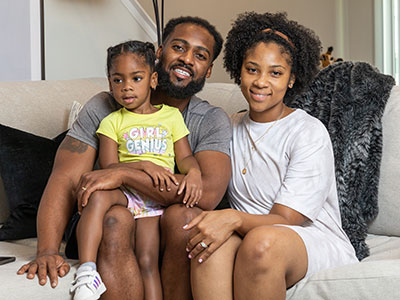
Jarryd Reid poses with his wife, Aramis, and daughter, Jaxin.
After two chemotherapy cycles, Jarryd transferred his care to Moffitt Cancer Center. He tolerated the majority of his treatment very well, only experiencing a few complications.
“My whole life I have been fit and self-sufficient, so I never thought I would need people to literally push me in a wheelchair because I might get fatigued from walking the stairs.”
Aramis recalls one doctor’s appointment where her husband was vomiting in the car and in the lobby. “The color of his skin changed and I had never seen him so weak,” she said. “When he actually allowed us to roll him in a wheelchair, I knew something was wrong. I thought this is where it’s going to get really, really bad. I thought OK, I am going to have to be a mom and a dad and I am scared.”
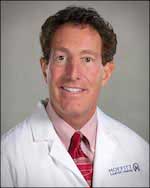
Dr. Michael Nieder, senior member of the Blood and Marrow Transplant and Cellular Immunotherapy Department
Despite his wife’s fears, Jarryd learned that day that he was in remission just halfway through treatment. But because his disease was so aggressive, his best chance for a cure was a stem cell transplant.
In September, after six months of chemotherapy, Jarryd underwent an autologous stem cell transplant. Unlike an allogenic transplant that uses a donor’s stem cells, Jarryd’s stem cells were removed and transfused back into him after an intense round of chemotherapy.
“In this case, we determined that an autologous transplant was better because the chance for cure between an autologous and allogenic transplant were the same,” said Dr. Michael Nieder, senior member of the Blood and Marrow Transplant and Cellular Immunotherapy Department. “And we also know that the complication rate is less.”
Showing up
Jarryd was hospitalized for another month during his transplant, but as with the other legs of his treatment, he continued to work. School had shifted to virtual learning during the pandemic, making it easier for him to teach from anywhere. During his eight months of treatment, he only missed five days of school.
“I am a workhorse. I love work,” Jarryd said. “I feel like I add value to the people that I am serving and I feel like the team needs me, so I’m going to make myself available to the team.”
In this case, his team was his students. Many of them rely on Jarryd to be the strong, constant male figure in their lives. Jarryd didn’t hide anything from them, always turning his camera on and occasionally having to pause lessons for a nurse to come into the room. The students watched as their once muscular teacher with dreadlocks dropped 30 pounds and lost his hair and his eyebrows. But it turned out to be one of the most valuable lessons he could teach.
“Sometimes these kids literally are in situations they don’t ask to be in, and for me, it was always hard to relate,” Jarryd said. “But now I can completely relate. In spite of the fact that this is something I can’t control, I am still showing them you can give effort where you can. I am here giving you my best, so you all should do the same.”
No one— not his family, his doctors or his school —was surprised Jarryd kept teaching. Especially his wife.
“If he could sit up, he was going to show up,” Aramis said.
“That level of commitment and attention to detail and faithfulness, that was motivating to me,” said Jones, the Sligh Middle School principal. “For him to do what he did in the midst of what he was going through personally and physically was unbelievably inspiring.”
With all he was going through, Jarryd also kept up as best he could with his physical fitness during treatment. While he couldn’t train at the level he was used to, he walked daily and performed body weight exercises as much as possible.
“His physical fitness is outstanding,” said Nieder. “In all types of cancer treatment, those people who are fit have much better survival than those who are very, very frail. So, it played a significant role in his long-term survival and also in decreasing the complications from transplant.”
‘Fight to beat me’
On Oct. 19, 2020, Jarryd celebrated his “new” birthday— the day his body started producing stem cells at a level where he can continue living a normal life.
“It was a pretty big deal,” Aramis said. “I felt a sense of relief, that I am not going to be alone, that I don’t have to explain anything hard to Jaxin.”
This summer, Jarryd returned to teaching in person at a YMCA summer school and began the 2021-2022 school year back at Sligh Middle Magnet School. He brought his new perspective on life with him.
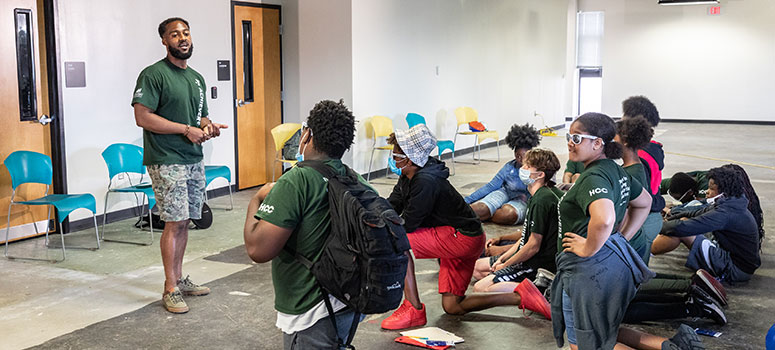
Jarryd Reid returned to teaching in the summer of 2021 at a YMCA summer program.
“I am slower to anger because there are a lot more things to be grateful for,” Jarryd said. “If you have hope, that’s the most important thing to be able to keep driving you forward because when your mind goes, your body goes rapidly.”
At home, he is once again enjoying being the husband and dad he was before his diagnosis.
“I can honestly say I am not really afraid of anything anymore,” said Aramis. “To watch his strength and faith and really see first-hand how your own fear can get in the way of moving through something successfully. I think I owe him a thank you for letting me be in the passenger seat and watching everything he’s done and how he did it.”
Jarryd will continue getting an immunotherapy infusion every two months for three years. His prognosis is good, but he knows if any other challenges are thrown his way he will handle them the same way: stepping up to the plate and swinging for the fences.
“You have to have this relentless mentality that even if I struck out last at bat, I still think I will hit a home run this time,” he said. “You are going to have to really, really, really fight to beat me.”


